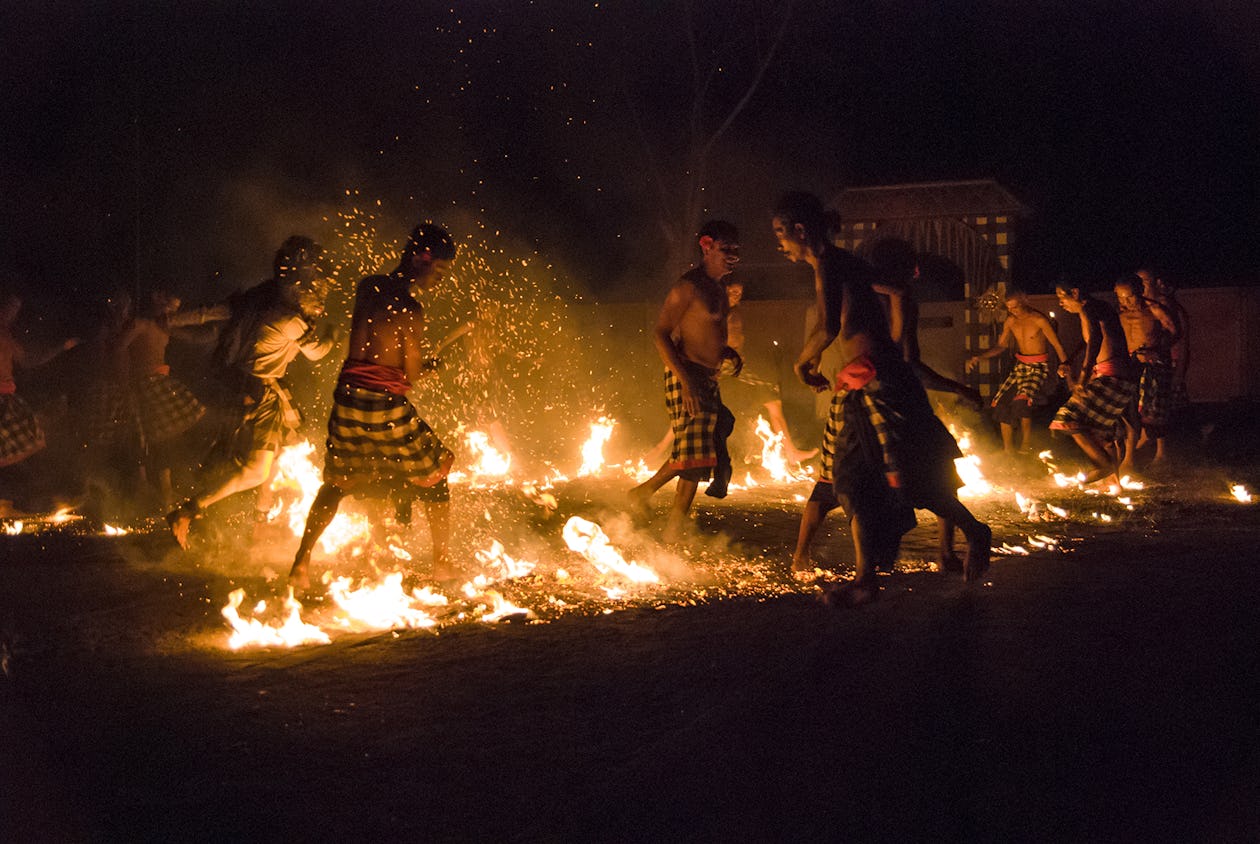Everyone has experienced some “Rites of Passage;” we have all gone through some sort of change or growth in life, whether it was puberty or maybe in athletic competition. There is something ceremonial about growing up and becoming a man or woman.
Some take this rite early and some take it later, but in the end we all go through something extreme to become the man or woman we’re expected to be. But what is a rite of passage really?
What is a Rite of Passage?

Traditionally, a rite of passage is a ritual event that marks a person’s transition between childhood and full inclusion into a tribe or social group. The concept of the rite of passage explores and describes various other milestones in an individual’s life when their social status is forever altered.
Imagine transitions from puberty, year seven to high school, coming of age, marriage and death. Initiation ceremonies such as baptism, akika, upanayana, confirmation and Bar or Bat Mitzvah are considered important rites of passage in their respective religions. Initiation rites are seen as fundamental to human growth and development as well as socialization in many communities.
Again, in today’s society most initiation rites are done through sports, fraternities, or religion. These rites function by ritually marking the transition of someone to full group membership. It also links individuals to the community and the community to the broader and more potent spiritual world.
Initiation rites are a natural and necessary part of a community, just as arms and legs are an extension of the human body. These rites are paramount to the development of an individual as well as the community.
Most of the ancient rites of passage can be separated and classified into five groups. Rite to Birthright, Rite to Adulthood, Rite to Marriage, Rite to Eldership and Rite to Ancestorship. Although there are five different rites of passage, they can more or less be distilled down to three steps: Separation, Transition, and Reincorporation.
Step 1: SEPARATION
The initial stage of the traditional rite of passage is the separation. During this phase an initiate is separated, either literally or figuratively, from his or her former life. During the separation phase, the individual’s past is expelled as the initiate prepares a new life.
This is much like a young man starting his transition into college football, the trials of entering a fraternity/sorority, or a civilian joining a branch of the military.
Step 2: TRANSITION
The second stage of the traditional rite of passage is the transition. During this phase, the initiate is in a state of transformation, or for the faithful, limbo. The individual is no longer part of his or her old life, but not yet fully inducted into a new one. The transition is usually marked by a series of tests deeming whether the initiate is worthy of this new life.
In ancient times the initiate’s test usually included some form or pain, circumcision, defecation, endurance, and/or hallucinogens. Our modern day equivalent translates to the rigorous selection process of boot camp, the young Jewish boy committing the Torah to memory, or spring training camp and tryouts for the collegiate football player.
Step 3: REINCORPORATION
The third and final chapter for the initiate is reincorporation. After the individual proves himself or herself worthy through a series of tests, the initiate is welcomed back into society and given a grand celebration of their new life.
The football player makes the final cut and is welcomed to the team, the young Jewish boy celebrates his passage into manhood with a Bar Mitzvah, and, for the recruit, the transition from civilian to soldier is complete.
TODAY’S SOCIETY IS LACKING IN TRADITIONAL RITES OF PASSAGE.
During all phases of the process, the elders who have previously gone through the ritual themselves guide the young initiate on his or her journey. By controlling the rite of passage, the community decides when a boy becomes a man, a girl becomes a woman, or a civilian becomes a soldier. Here are 5 Ancient example of Rites of Passage:
Ancient Rite of Passage #1: African Lion Hunt

The lion hunt begins at dawn, while the tribe sleeps. The warriors meet near a local landmark before departing to predetermined hunting areas. The older, experienced warriors filter out the group until only the bravest and strongest warriors remain.
The resulting group is known as the Ilmeluaya, or fearless warriors. Until the return of the limeluaya, the rejected warriors are sworn to secrecy by the elders concerning the details of the hunt.
The older warriors often force the limeluaya to relinquish excess weaponry, considering it insulting to wield more than a spear, a weapon more than sufficient to slay a lion. Following a successful hunt, the tribe holds a weeklong celebration to commemorate the warriors.
The warrior who struck the first blow is courted by the women and receives an Imporro, a doubled-sided beaded shoulder strap, as a token. The warrior dons this ornament during the ceremonies. The community honors the hunter, or Olmurani Lolowuaru, with much respect throughout the remainder of his lifetime.
Ancient Rite of Passage #2: Spartans

Most people are aware of the Spartans and their intense training and child combat trials from the film “300.” One of the most interesting rite of passage for young men was called Helot Killing. At the age of seven, the male child was enrolled in the agoge under the authority of the paidonómos, or “boy-herder,” an elder statesman charged with supervising education.
This began the first of the three stages of the Agoge. If a young child was a standout “student” at Agoge, he was allowed to train with Krypteia; a state security force organized by the rulers of Sparta.
Following his eighteenth birthday, he would be sent off into the country with nothing but a knife and given the task of killing as many state-owned slaves (called helots) as possible. If you were asked to join the Krypteia, at age twenty the boy would join the Spartan Army and enter one of the public messes. If voted into a public mess, service continued until age thirty, where the right to marry and vote were granted, becoming a full member of Spartan society.
This rite of passage follows the three stage process. The first stage is removal from society, happening to a Spartan boy at age seven, leaving to train at the agoge. This stage includes twenty three years of training and combat experience, turning Spartan boys into men.
The next stage, transition, occurs when the young man goes on his quest to kill Helots and return to his krypteia. Following his return, he transitions into the final stage, reincorporation into society. He is now considered a man and a warrior, and is reincorporated into society with the reputation of a true Spartan man.
Ancient Rite of Passage #3: Land Diving

Land Diving is both a harvest ritual and a rite of passage amongst the tribes of the small pacific island of Vanuatu. The origin of land diving reportedly comes from the legend of a woman who was dissatisfied with her husband, Tamaliel.
She fled to the jungle where she climbed a banyan tree after her husband pursued her. Tamaliel began climbing the tree after her and, after tying lianas vines around her ankles, she jumped to escape.
Tamaliel jumped after her but, having failed to tie lianas to his ankles, plummeted to his death. The men of the Pentecost Island in Vanuatu climb a rickety 98-foot-tall tower, tie vines to their ankles, and dive to the ground, falling at speeds reaching up to 45 mph. When a dive goes correctly, the person gets close enough to touch his shoulders or his head to the earth.
However, if a dive goes incorrectly, things can get messy. Unlike bungee jumping, these vines aren’t elastic and a miscalculation in vine length could lead to broken legs, cracked skulls, or even death.
Boys begin participation following circumcision at about age 7 or 8, though they usually are permitted to jump from a shorter tower. When a boy jumps, his mother throws an item from the boy’s childhood off the tower, extinguishing the remnants of his youth and completing the transition to adulthood. Divers also refrain from sex the day before they jump; legend says intercourse will cause the jump to go poorly.
Ancient Rite of Passage #4: Bullet Ant Glove of Brazil

The Satere-Mawe people of the Amazon perform an initiation ritual forcing young men to place their hands into mittens filled with hundreds of bullet ants. The bite is approximately twenty times more painful than being stung by a wasp.
The tribal men gather the ants and submerge them into a solution that temporarily renders them unconscious. The ants are then woven into the mittens.
Upon waking, the men place their hands into the gloves, where they must remain for up to ten minutes. The ant’s sting prevents the body from protecting itself from pain. The body begins to convulse, and the pain can last up to twenty-four hours.
The most unusual aspect of the entire process is the fact that many men choose to repeat this ritual multiple times to prove their manhood.
Ancient Rite of Passage #5: Matis Trial Hunt

For a boy to prove himself worthy to hunt among the men in the Matis Trial deep in Brazil’s Amazon jungle, he must first undergo four trials. The first trial involves temporary self blinding using a concoction of bitter poison directly into their eyes. This cocktail allegedly improves vision and enhances the senses.
The next series of trials includes a series of violent beatings and whippings. The trials conclude with an inoculation from the Phyllomedusa bicolor, a small poisonous frog native to the Brazilian jungle.
But the vaccine alone isn’t enough, before injecting the frog’s toxin with a homemade wooden needle, the elders burn the area of the boy’s skin where the prescription is to be delivered. The Matis believe the poison increases strength and endurance, however, these enhancements are preceded by unbearable light-headedness, vehement vomiting, and violent relieving of the bowels.
Once the boys prove themselves worthy of the hunt, they are given the privilege of performing the very same rituals before every future outing.



